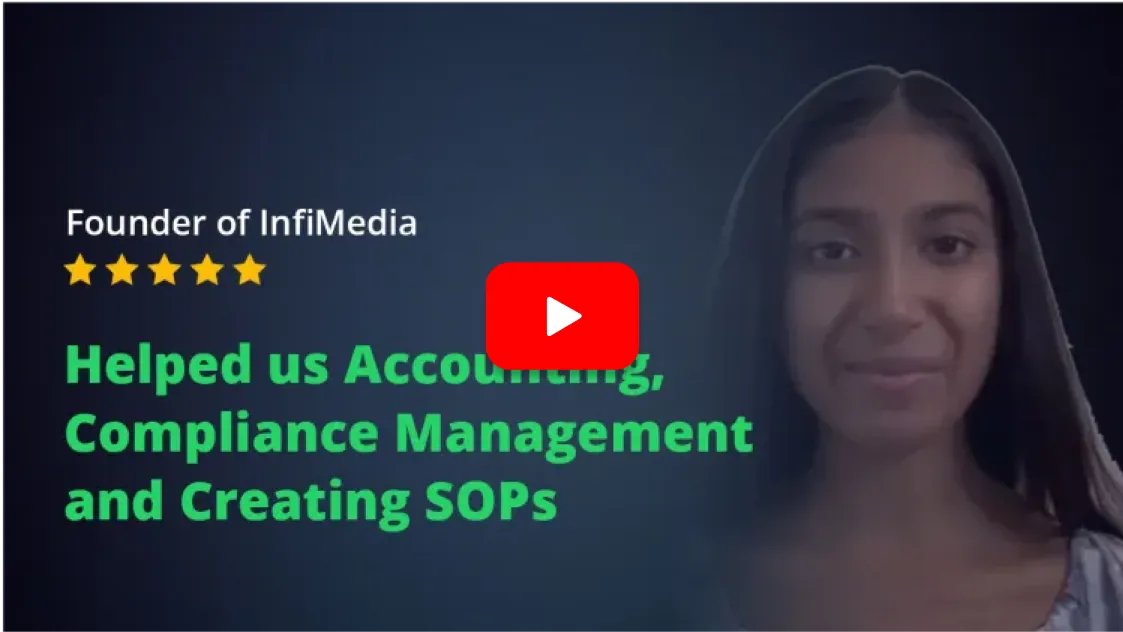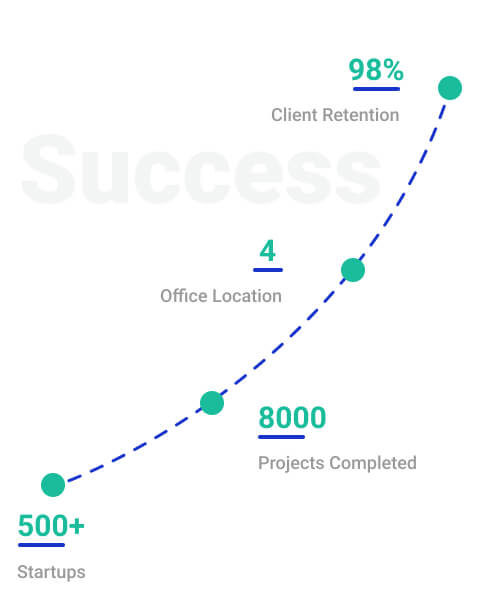A Pitch Deck for startups is a startup presentation that introduces your business to prospective investors. Pitch decks may also be from time to time called investor pitch deck or startup business pitch. It explains the firm and its future accomplishments and potential customers in an easy-to-understand manner on the slides so that the investor can fully grasp the company opportunity.
An Investor Pitch deck presentation includes numerous slides which help the entrepreneur explain more about the business. Content for the pitch deck might be developed in either common software like PowerPoint for innovative presentation.
Purpose of a Pitch Deck for Startups
A Pitch Deck for startups is a slide presentation which presents your company, business plan and vision to prospective investors. This particular tool is used for everything from getting brand new investors to delivering pitches in front of prospective backers. How exactly the pitch is delivered might depend on the entrepreneur's style and context.
An effective sample startup pitch deck offers a quick summary of the business idea to engage investors. This engagement might eventually result in investors becoming serious about your startup or business ideas and investing in you financially. The presentation of startups with start up pitch deck happens in person and online, mainly in meetings with clients or investors.
Contents of Sample Startup Pitch Deck for Startups
To create a Pitch Deck for startups that captures investor interest, the following elements are a must:
|
Section
|
Description
|
|
1. Overview of the Company
|
Brief introduction of the company including legal name, logo, contact information, and headquarters location. Tagline summarising business essence. Overview of leadership team's background.
|
|
2. Vision of the Company
|
Elaboration on mission and vision, describing the problem addressed and intended positive impact. Description of what success looks like, using emotive language and imagery.
|
|
3. Team Details
|
Comprehensive profiles of key team members, emphasising strengths, roles, and track records. Highlight of relevant experiences and achievements, showcasing alignment with business goals. Personal stories or unique traits demonstrating dedication.
|
|
4. Problem Statement
|
Clear explanation of the problem addressed, supported by data-driven insights, real-world examples, and case studies. Use of graphs, statistics, and quotes to communicate urgency and scale of the problem, demonstrating potential consequences.
|
|
5. Proposed Solutions
|
Presentation of solution with breakdown of key features and functionalities. Use of graphics, diagrams, and videos to visually demonstrate how solution works. Showcase of before-and-after scenarios and evidence of effectiveness through testimonials or pilot results.
|
|
6. Product/Service Description
|
Clear description of service or product, including elements, technical information, and selling points. Use of high-quality images, demos, or prototypes for immersive understanding. Highlight of how offering addresses identified pain points and reflects industry trends.
|
|
7. Target Market
|
Showcase of market research findings, including demographic, psychographic, and behavioural insights. Illustration of product/service alignment with target audience needs and aspirations. Utilisation of market segmentation and alignment with emerging trends.
|
|
8. Competitive Scene
|
Detailed analysis of competitors, categorisation based on direct and indirect competition. Utilisation of competitive matrices for comparison. Highlight of unique value propositions and differentiation strategies. Use of charts to depict competitive advantage.
|
|
9. Business Model
|
Detailing of revenue generation model, including pricing structures, sales channels, and customer acquisition costs. Discussion of potential revenue streams beyond core offering. Explanation of partnerships, licensing, or subscription models. Outline of exit strategies.
|
|
10. Marketing Strategies
|
Outline of extensive marketing plan, covering digital and conventional methods, content marketing, social media engagement, influencer collaborations, and PR campaigns. Description of customer journey and development of brand trust and loyalty. Prototypes for illustration of messaging and branding.
|
|
11. Financial Projections
|
Provision of detailed financial projections for multiple years, including revenue forecasts, expense breakdowns, and net income projections. Explanation of assumptions and growth drivers, utilisation of graphs and charts for visual presentation. Addressing of key performance indicators (KPIs).
|
|
12. Funding Specification
|
Structured funding request, dividing funding sum into product development, sales, and operating expenses. Explanation of investment allocation and expected results. Discussion of funding impact on growth and achievement of milestones.
|
Overview of the Company
Begin with a brief yet compelling introduction. Include essential details such as the company's legal name, logo and relevant contact information. Additionally, include a brief tagline or motto that summarises your business's essence. Highlight the geographical location of your business headquarters and any key operational centres. To add a personal touch, provide a concise overview of the leadership team's background, showing their qualifications and experiences.
2. Vision of the Company
Elaborate on your company's mission and vision in more detail. Draft a narrative that describes the problem your business aims to solve and the positive impact you intend to make. Paint a clear picture of what success looks like for your company. Use emotive language and imagery to engage investors on an emotional level, creating a strong connection with your vision.
3. Team Details
Offer comprehensive profiles of key team members, emphasising their individual strengths, roles and track records. Highlight their relevant experiences and achievements, showcasing how their expertise aligns with your business goals. Include personal stories or unique traits that demonstrate their dedication and commitment to the venture. Use visuals like headshots and brief bios to humanise the team.
4. Problem Statement
Get clearly into the problem your business addresses. Provide data-driven insights, real-world examples and case studies that underscore the urgency and scale of the problem. Utilise graphs, statistics and quotes to effectively communicate the points your solution aims to ease. Show a clear cause-and-effect relationship between the identified problem and the potential consequences it poses.
5. Proposed Solutions
Present your solution with a comprehensive breakdown of its key features and functionalities. Utilise a mix of graphics, diagrams and videos to visually demonstrate how your solution works. Showcase before-and-after scenarios to highlight the transformation your product or service offers. Use customer testimonials, success stories or pilot program results to show the effectiveness of your solution.
6. Product/Service Description
Provide a clear description of your service or product, its elements, technical information and distinctive selling points. Include high quality images, interactive demos or prototypes for an immersive understanding. Highlight the way your offering addresses the pain points you identified earlier and how it reflects latest industry trends and demands.
7. Target Market
Showcase your market research findings. Offer detailed demographic, psychographic and behavioural insights about your target audience. Illustrate how your product/service meets their needs and aspirations. Utilise market segmentation to showcase your understanding of different customer segments and make your approach accordingly. Explain how your solution aligns with emerging market trends.
8. Competitive Scene
Present an exhaustive analysis of your competitors, categorising them based on direct and indirect competition. Utilise competitive matrices to visually compare your product's features, pricing and benefits against others. Highlight your unique value propositions and differentiation strategies. Use charts to depict your competitive advantage and showcase potential market share gains.
9. Business Model
Detail your revenue generation model, telling about pricing structures, sales channels and anticipated customer acquisition costs. Address potential revenue streams beyond the core product or service. Discuss partnerships, licencing or subscription models if applicable. For exit strategy, outline potential scenarios such as acquisition, IPO or buyback, showing how investors can potentially profit from their investment.
10. Marketing Strategies
Outline your extensive marketing plan, including digital and conventional methods. Handle content marketing & social media engagement, influencer collaborations and PR campaigns. Describe the customer journey & touchpoints and demonstrate the way you intend to develop brand trust and loyalty. Use prototypes to illustrate your messaging and branding.
11. Financial Projections
Provide detailed financial projections for a no. of years. Include revenue forecasts, expense breakdowns and net income projections. Offer a clear explanation of your assumptions and growth drivers. Utilise graphs and charts to present the projected financial trajectory visually. Address key performance indicators (KPIs) and metrics that investors can monitor to see your business's progress.
12. Funding Specification
End your presentation with a structured funding request. Divide the funding sum into product development, sales and operating expenses. Explain the allocation of the investment and expected results. Discuss the way the funding will accelerate your growth and hit the earlier milestones. Let investors see how their investment will impact your business.
Major Considerations for an Effective Pitch Deck for Startups
Avoid particular things when crafting a Pitch Deck for startups. Major considerations for a very good pitch deck for startups include:
- Optimal length: Keep your pitch deck short and sweet and restrict your pitch deck to 15 to 20 slides. Long presentations can overwhelm investors and divert attention from key aspects.
- Visual and Textual Balance: Focus on a visual and textual Balance. Avoid putting too much text on slides; this can result in information overload and difficulty absorbing key points for investors.
- Precision & Relevance: Resist the urge to include everything about your business. Prioritise supplying relevant and accurate information which directly plays a role in the investor understanding of your value proposition and potential for growth.
- Clarity in Communication: Avoid using numerous acronyms unfamiliar to investors. In case you do use acronyms, state the reason.
- Professional Presentation: Use caution with layout and aesthetics. Slides designed poorly with substandard graphics could destroy your pitch deck. Choose a professional look and feel that carries credibility.
Why Choose StartupFino for Pitch Deck for Startups?
StartupFino offers complete services on Pitch Deck for Startups to entrepreneurs. From initial guidance to meeting your needs and keeping your startup in good legal standing, we can help.
From the skilled staff members at StartupFino entrepreneurs can expect the following services on sample pitch deck for investors:
- Personalised investor pitch decks for startups.
- Improved investor communication with customised pitch decks.
- Transformed complex business models into compelling visuals.
FAQs
A pitch deck is a quick introduction to the business plan, products/services and growth traction that gives prospective investors or clients a feel of your business. You know this as an entrepreneur that your organisation or concept needs financing.
Some tips for building the perfect seed investment pitch deck are:
- Write a personable story about your startup.
- Display one main idea per slide.
- Make use of the exact same colour, font & size format for every slide.
- Keep bullet points low.
- Create fewer startup presentation ppt than needed.
- Use imagery frequently to keep content interesting and entertaining.
A pitch deck is a presentation used to raise venture capital for your company. These presentations present everything from why your business exists to your business model, your business model, your milestones or progress, your staff and a call-to-action to obtain buy-in and funding from potential investors.
A pitch deck isn't about closing a deal. Instead, it is about getting another party (an investor or maybe a client) to continue speaking about your business.
Pitch deck strategy is a presentation which describes your business idea, objectives and potential to investors or stakeholders.
Any deck that can make it hard to comprehend quickly the idea and the investment opportunity is handicapping itself against decks that make the proposition clear and short.
Teams normally have less time to pitch. In real life this is the pitch for a pitch (in case you get this pitch to a potential investor and they reply, you might generate more time with that exact same potential investor - that is the beginning of the actual pitching process for that investor).
As an aspirant entrepreneur or first time startup proprietor, among the best things you are able to do is pitch your business to investors. Your pitch will be your opportunity to introduce your startup, raise funds, and obtain help to move ahead.
Your pitch deck ought to be extremely visual, so use as lots of visuals as possible to demonstrate your points. Examples of visuals you could include in your pitch deck: Photographs - striking pictures can help your investors see your vision.
An investor pitch deck needs to have your current market share, your sales model along with a financial breakdown of the way you would put it to use. Include pricing tiers and revenue projections, in case applicable. And investors want to know the way their funding would help your idea succeed.
To make a great pitch you must do three things: Look at StartupFino guide to making an excellent pitch. Take your audience on a logical journey. End with a call for action.































































